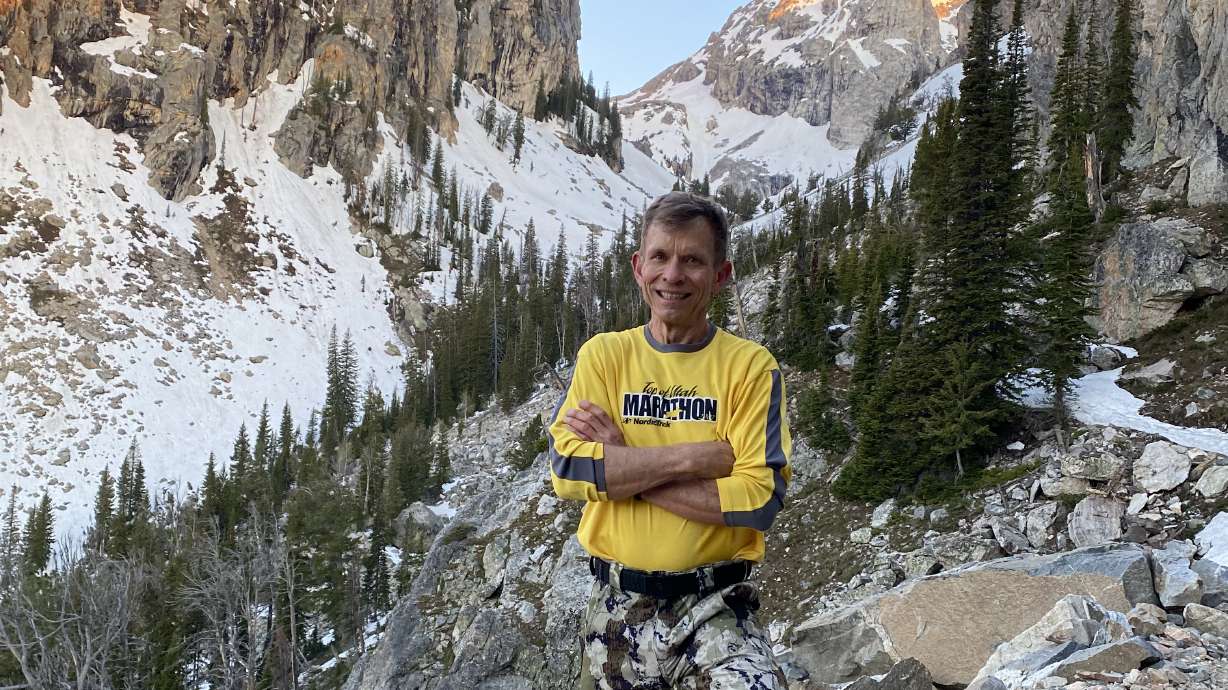LOGAN — A diagnosis of Parkinson’s disease changed Kim Lundgreen’s life, but not in the ways he imagined.
When he heard a doctor tell him that he had Parkinson’s in 2017, Lundgreen thought his life was over. He had enjoyed hiking, running the St. George Marathon — he ran it 25 years in a row — traveling the world with his wife, Mindy, climbing mountains, just living an active lifestyle. From what he knew at the time, he could never do these things again with Parkinson’s.
As time went on, the 67-year-old Logan resident began to deteriorate. The tremors and rigidity transformed the man who ran ultramarathons into one who could barely walk across his living room without holding on to something. And when his wife died from ovarian cancer in 2024, Lundgreen wondered how he’d even go on.
Then he figured it out: He’d try to move his body the way he used to on adventures with Mindy. And like his late wife, he would encourage other people to move, too.
“When I heard the doctor, I thought, oh, that Parkinson’s,” he said. “But just moving has made me feel better, and inspiring other people to move has made this whole diagnosis into a gift. I want to live until I’m 90 years old! And I have the special formula to make that happen: move.”
Lundgreen discovered it is one thing to want to move and a whole other thing to actually do it, but a recent trip to the Grand Tetons opened his eyes.
“I went to visit him — I hadn’t seen him in a while — and I saw him and thought: Wow. He was having a hard time walking across a room,” said David Toone, Lundgreen’s friend and “soul brother,” who is 68. “So, I said to him, ‘Do you want to come climb Middle Teton?’ And he actually showed up to do it. That really opened my eyes. He was still frail, but he was going to give it a go.”
Lundgreen had to accept that walking around the block or across a parking lot was going to be harder than he thought possible. He also had to accept that he would not walk or run as fast as he had before. He still had Parkinson’s, meaning he would be in pain when he moved.
It was a challenging climb for Lundgreen, as well as for Toone and others on the trip. They helped Lundgreen up and down the climbing paths, which added to their hiking time and difficulty level, but Toone said getting his longtime friend moving again was worth the time it took to complete the climb.
And Lundgreen remembered what it was like when he began running marathons and hiking decades before — once he started, he felt better and couldn’t stop. He also couldn’t stop talking to people about the importance of moving.
I feel better now than when I was diagnosed.–Kim Lundgreen, who has Parkinson’s disease
He attended a boxing class in Logan and encouraged people to take the stairs instead of using the elevator. Lundgreen registered for a 5K race and, later, a trail marathon, hoping others could see how important movement is.
Lundgreen is not one to preach on social media, but he does like to spread his movement message through a conversation, because a conversation allows people to ask questions and share new ideas.
His message is clear: You don’t have to run marathons — but you can do something. And once you start doing something, that’s when you start to dream of a happy future with Parkinson’s disease.
The changes in his life and his return to physical activity have brought attention from people all over the world. A Parkinson’s patient in Australia contacted him to discuss how he returned to running. Many others from across the globe have asked the same thing.
But the big surprise was when Dean Karnazes, an American ultramarathon runner, contacted him to offer his support and to wish him well on his continued running journey. Karnazes, who is famous for running 50 marathons in the 50 states in 50 days, as well as running 148 miles on a treadmill in 24 hours, suggested that the two of them go for a run together the next time Karnazes is in Utah.
All this attention — even from someone as massive to a runner as Karnazes — has not swayed Lundgreen from his goals. His biggest bucket-list item is to climb Mount Kilimanjaro, and he plans to return to Salzburg, Austria, where he and his late wife once took a “Sound of Music” tour.
Most importantly, Lundgreen hopes to be alive to see what science will come up with for people with Parkinson’s disease.
“I want to be alive when they come up with a cure for Parkinson’s,” he said. “I’m telling you, I feel better now than when I was diagnosed. The 5K race was like breaking through a brick wall. As long as I’m moving, I feel great.”
The Key Takeaways for this article were generated with the assistance of large language models and reviewed by our editorial team. The article, itself, is solely human-written.

